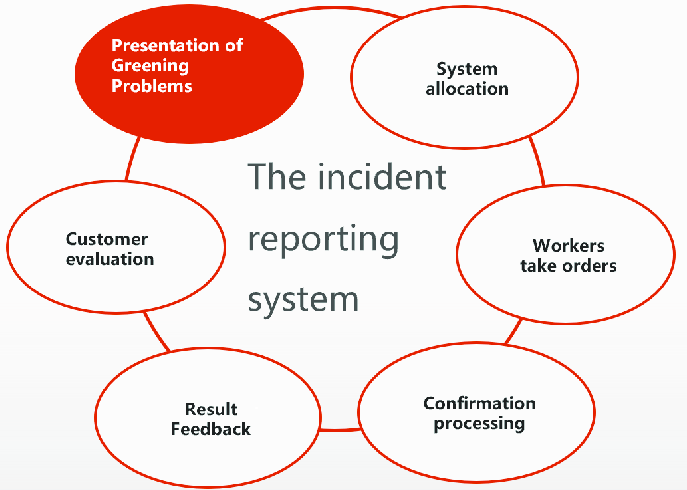Key Takeaways:
- Understanding incident reporting’s role in proactive workplace safety.
- Looking into the different kinds of incidents that need to be well recorded.
- Discussing the compelling benefits and challenges of incident reporting systems.
- Insights into the legal ramifications and the infusion of advanced technology in incident reporting.
- Emphasizing incident reports’ role in training and fostering a culture of safety and transparency.
In the modern workplace, workplace safety is a topic of utmost importance. An efficient incident reporting system is one of the pillars that uphold safety measures effectively. This system provides a formal process for documenting occurrences that may threaten the safety and well-being of employees, aiming to address issues proactively rather than reacting to unfortunate events post-occurrence. It’s not merely about compliance; it’s an ethical, strategic approach to ensure a safe working space for all.
Introduction to Incident Reporting Systems
Incident reporting serves as the backbone of occupational health and safety efforts. It involves tracking and documenting occurrences that could lead to injury, illness, or significant loss within an organization. Businesses can examine patterns, spot risks, and put preventative measures in place to stop similar incidents from happening again by gathering and analyzing this data. Insights drawn from meticulous incident reporting can drive policy changes, equipment upgrades, and staff training, collectively contributing to a marked reduction in workplace mishaps.
What Kinds of Incidents to Report?
Incident reporting shouldn’t be limited to significant accidents or injuries. It encompasses many events, including near misses, safety threats, and non-injury incidents. Reporting these occurrences is vital as they are precursors to potentially more severe consequences. By documenting and analyzing these events, companies are better positioned to address systemic issues that can lead to injuries or property damage before they manifest into realities.
The Profound Benefits of Incident Reporting
An intricately designed incident reporting system is a treasure trove of operational intelligence. It goes beyond compliance, fostering a culture where safety is ingrained in every activity performed within the organization. The data collected facilitates detailed analysis, from which safety measures can be formulated to forestall future mishaps. Moreover, this process is instrumental in demonstrating to regulatory bodies and stakeholders that the organization is committed to maintaining safe work conditions.
Prevention of Future Accidents Through Reporting
The proverb “prevention is better than cure” is especially relevant in incident reporting. Scrutiny of reported incidents can uncover root causes and trend patterns, essential in crafting preventive strategies. It’s a continuous improvement cycle; companies can use a forensic approach to enhance processes, equipment, and behaviors to lay the groundwork for a safer tomorrow.
Critical Steps for an Optimal Incident Reporting Process
Implementing a foolproof incident reporting process entails several steps. Firstly, the system should be easily accessible to all staff, ensuring they can report incidents without any hurdles. Training is another cornerstone, equipping personnel with the knowledge to report accurately and concisely. Moreover, management should show commitment by reviewing reports and acting upon the gathered information to exhibit accountability and dedication toward safeguarding their workforce.
Technological Enhancements in Reporting
Advancements in technology have reshaped incident reporting, streamlining the process and enhancing accessibility. Today, innovative software solutions and mobile apps allow real-time reporting, allowing staff to document incidents as they occur instantly. These technological tools often come with analytical capabilities, enabling management to identify trends and take preventative actions promptly and quickly.
Addressing Challenges in Traditional Reporting Systems
Despite its importance, incident reporting is often met with hesitation or even resistance within organizations. Traditional systems can be cumbersome, leading to underreporting and other challenges. Technological solutions are innovating to make the process more user-friendly and efficient, enhancing participation and data collection quality.
Legal Aspects of Incident Reporting
Legal compliance is a significant aspect of incident reporting. Businesses must comply with laws and rules, like those upheld by the Occupational Safety and Health Administration (OSHA), that require them to report certain kinds of incidents. Legal ramifications and reputational damage may arise from noncompliance. Guidance on these legalities can often be found through official resources, offering a clear foundation upon which companies can build their reporting procedures.
Training and Development Via Incident Reporting
In employee training and development, incident reports play an invaluable role. These reports act as a repository of real-world scenarios that can highlight specific areas where safety training is most needed. Consequently, training programs can be tailored more effectively, focusing on the practical application of safety principles based on actual workplace occurrences.
Enhancing Workplace Culture Through Incident Reporting
A comprehensive incident reporting system is about more than mere data collection — it’s a statement of an organization’s commitment to transparency and accountability. By encouraging open communication and actively engaging in the well-being of employees, a company fosters an environment where safety is seen not as a regulatory requirement but as a fundamental component of the organizational ethos.











